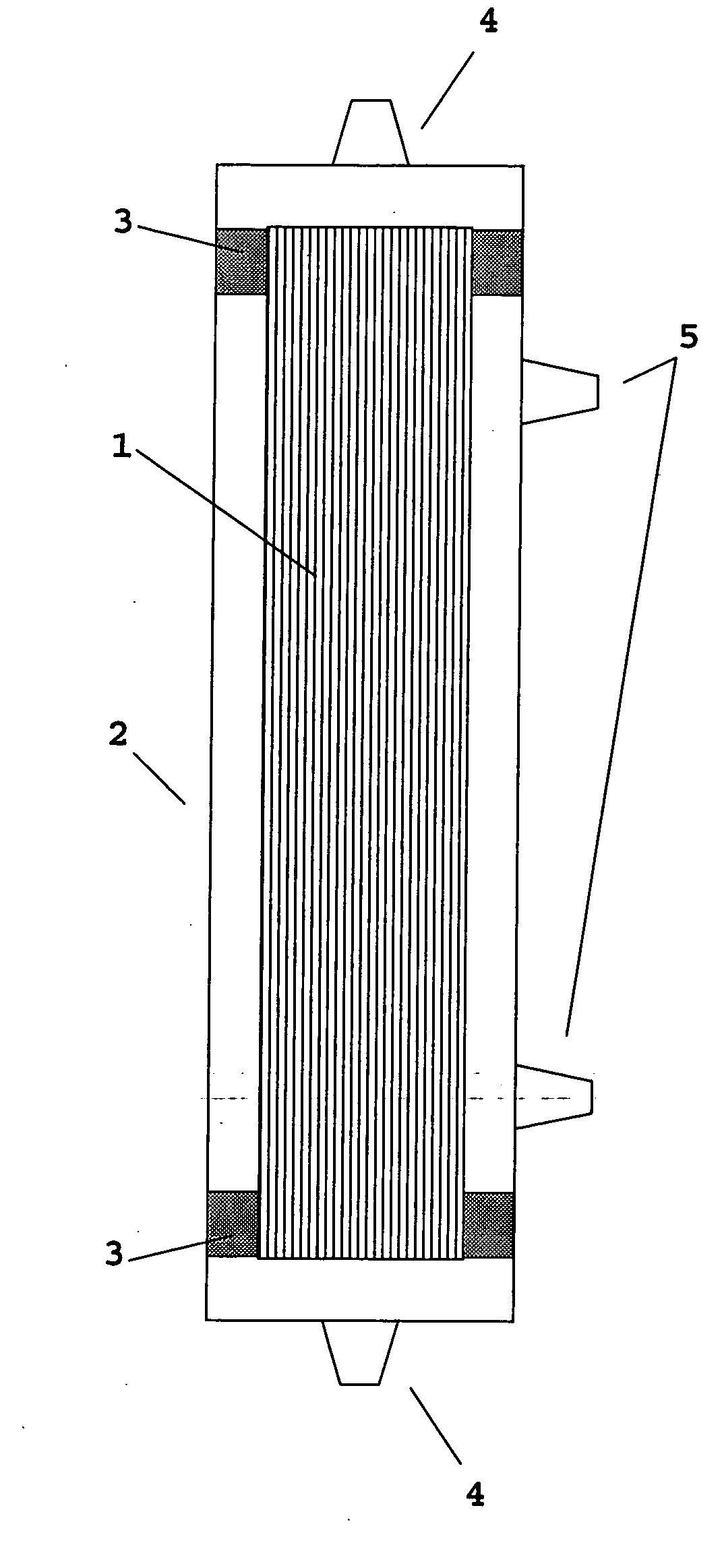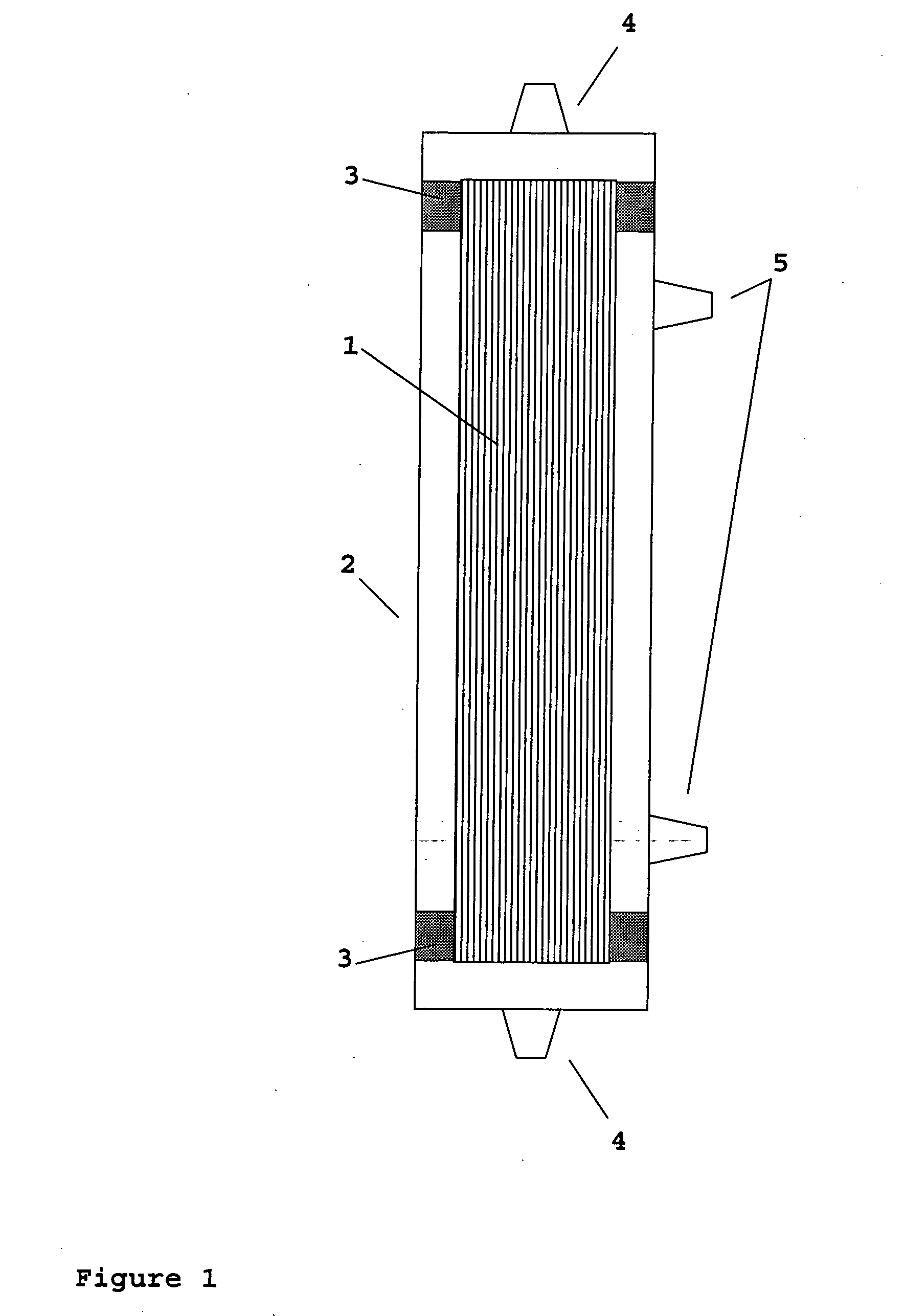Device for renal cell expansion
a technology of renal cell and device, applied in the field of device for renal cell expansion, can solve the problems of adverse reactions in the patient treated, many cells are not available in any quantity, and cells often lose their ability to differentiate and respond to hormones, and achieve high performance characteristics
- Summary
- Abstract
- Description
- Claims
- Application Information
AI Technical Summary
Benefits of technology
Problems solved by technology
Method used
Image
Examples
example 1
[0166]Circular specimens having a diameter of 44 mm of A) a blend of polyamide, polyarylethersulfone and polyvinylpyrrolidon (Polyflux®, Gambro) and B) a copolymer of acrylonitrile and sodium methallylsufonate (AN69, Gambro) were cut from sheet membranes, placed in 60 mm petri dishes and secured with aluminum rings having a diameter of 38 mm. MDCK cells were seeded over the whole area of the petri dishes and cultured using M199 medium+10% FCS.
[0167]After 24 hours of culturing, almost no growth was observed on the Polyflux® membrane, while significant growth was observed on the AN69 membrane (see FIG. 2).
example 2
[0168]Circular specimens having a diameter of 44 mm of a) a copolymer of acrylonitrile and sodium methallylsufonate (AN69, Gambro) and b) a copolymer of acrylonitrile and sodium methallylsufonate, coated with polyethyleneimine (AN69ST, Gambro) were cut from sheet membranes, placed in 60 mm petri dishes and secured with aluminum rings having a diameter of 38 mm.
[0169]Different fractions of primary human renal tubule cells cells were seeded over the whole area of the petri dishes and cultured using M199 medium+10% FCS. The results after 14 days of culturing are shown in FIG. 3:[0170]G) human proximal tubule cells (hPTC) on AN69ST;[0171]H) human distal tubule cells (hDTC) on AN69ST;[0172]I) a mixture of human proximal tubule cells with other renal cells (hPneg) on AN69ST;[0173]J) a mixture of human distal tubule cells with other renal cells (hDneg) on AN69ST;[0174]K) human proximal tubule cells (PTC P5) on AN69ST;[0175]L) human proximal tubule cells (PTC P5) on AN69.
[0176]As can be see...
example 3
[0177]Two different cell types:[0178](a) a mixture of primary human proximal and distal tubule cells cells (hNF) of passage 2 (1 / 400 mm2), and[0179](b) commercially available human renal proximal tubule cells (RPTEC, Lonza / Clonetics) of passage 3 (1 / 200 mm2)
were cultured on AN69ST membranes in different media:[0180](i) M199 (Sigma)+10% FCS (comparative)[0181](ii) Keratinocyte-SFM (Invitrogen)+20-30 μg / ml BPE+5 ng / ml EGF+1.2 mmol / l Ca2++1 vol.-% FCS (according to the present invention)
for seven days.
[0182]The results are shown in FIG. 4:[0183]A) hNF-P2 in medium (i);[0184]B) hNF-P2 in medium (ii);[0185]C) RPTEC in medium (i);[0186]D) RPTEC in medium (ii).
[0187]Cells cultured in medium (i) show a fusiform morphology, while cells cultured in medium (ii) have developed the desired isodiametric morphologies.
[0188]After culturing the RPTEC cells on AN69ST for 30 days in the different media, a cell number of 8.8·105 cells and a cell density of 1956 cells / mm2 were obtained with medium (ii),...
PUM
| Property | Measurement | Unit |
|---|---|---|
| Adhesion strength | aaaaa | aaaaa |
Abstract
Description
Claims
Application Information
 Login to View More
Login to View More - R&D
- Intellectual Property
- Life Sciences
- Materials
- Tech Scout
- Unparalleled Data Quality
- Higher Quality Content
- 60% Fewer Hallucinations
Browse by: Latest US Patents, China's latest patents, Technical Efficacy Thesaurus, Application Domain, Technology Topic, Popular Technical Reports.
© 2025 PatSnap. All rights reserved.Legal|Privacy policy|Modern Slavery Act Transparency Statement|Sitemap|About US| Contact US: help@patsnap.com



